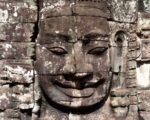Archaeologists have discovered a peculiar arrangement of human bones and skulls in a small town in Mexico, which may shed light on the funerary practices of pre-Hispanic cultures.
The Discovery of the Burial Site
The discovery was made in Pozo de Ibarra, a town in the state of Jalisco, during the construction of a sanitary sewage network. The workers alerted the researchers from the National Institute of Anthropology and History (INAH), who excavated the site and found a primary burial of one individual surrounded by various scattered human bones.
The bones included femurs, tibias, ulnas, and skulls without any anatomical connection. The skulls were deliberately stacked on top of each other and belonged to at least seven men of different ages. Some of the skulls showed signs of cranial modification, a cultural practice that altered the shape of the head for aesthetic or social reasons.
The Possible Meaning of the Burial
The archaeologists were able to determine that the bones were already skeletonized at the time of burial and placed deliberately and simultaneously as part of a funerary rite. They also found ceramic vessels and figurines that dated back to the Amapa cultural phase, between 500 and 850 C.E.

According to Claudia Servín Rosas, the head archaeologist of the rescue team, the burial may have been related to the founding of a new settlement in the region. She suggested that the male members of the same family may have been offered as sacrifices to celebrate the event.
“This method of arrangement suggests the existence of specific ceremonial practices associated with death in pre-Hispanic times in the region. The discovery is possibly related to the Amapa cultural phase because ceramic vessels and anthropomorphic figurines from that period were also recovered,” INAH stated in their report.
The Significance of the Find
The find is considered unique and valuable because it offers a glimpse into the funerary customs and rituals of pre-Hispanic cultures in the region. There are no precedents for this type of burial, which differs from the more common practices of cremation or inhumation.
The discovery also adds to the knowledge of the Amapa culture, which was one of the many groups that inhabited the western coast of Mexico before the Spanish conquest. The Amapa culture is known for its pottery, metallurgy, and trade networks.
The remains will be protected and preserved for further research and analysis, INAH said. The researchers hope to learn more about the origin, age, sex, health, and diet of the individuals, as well as the possible causes and methods of their death.














